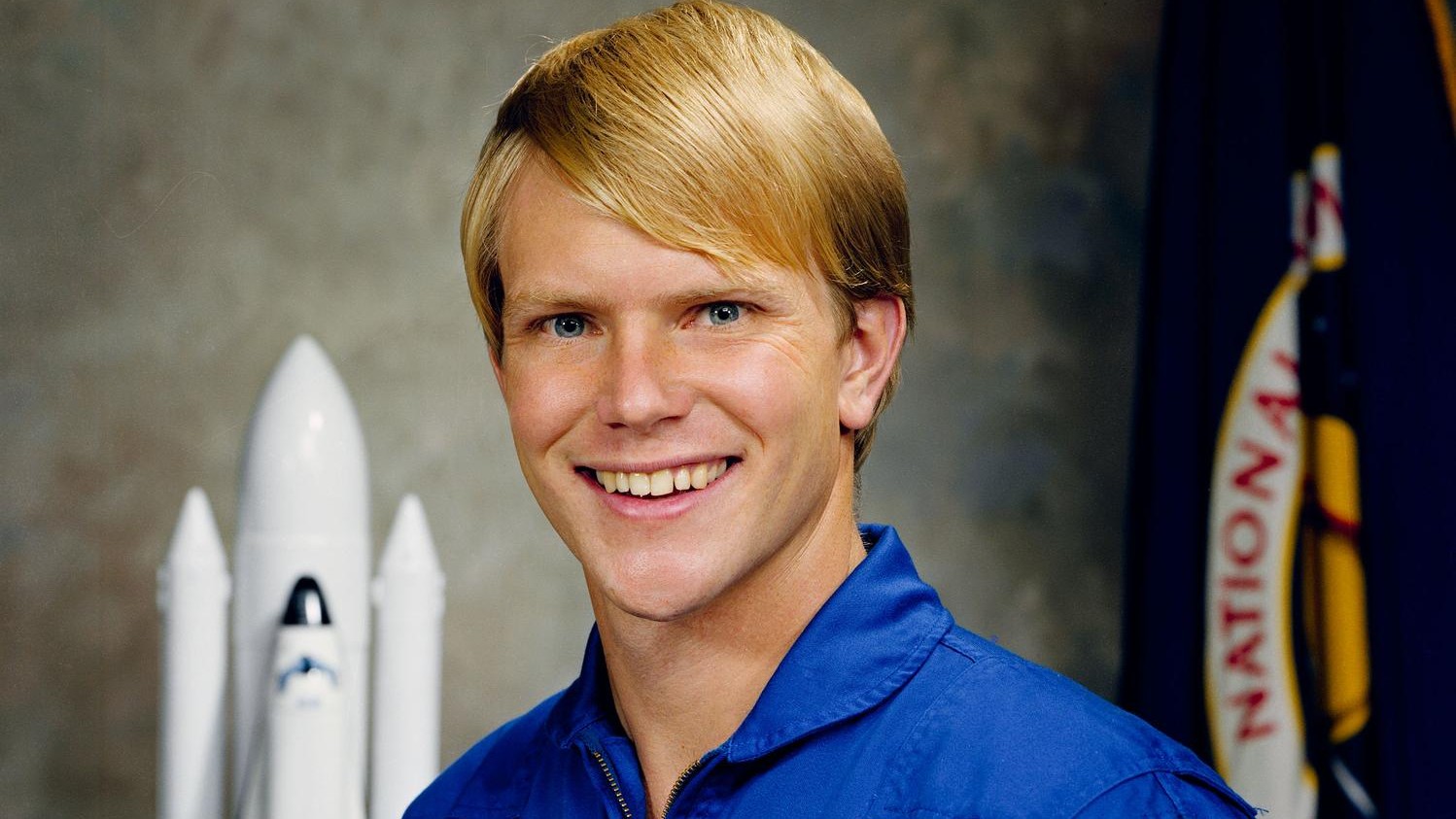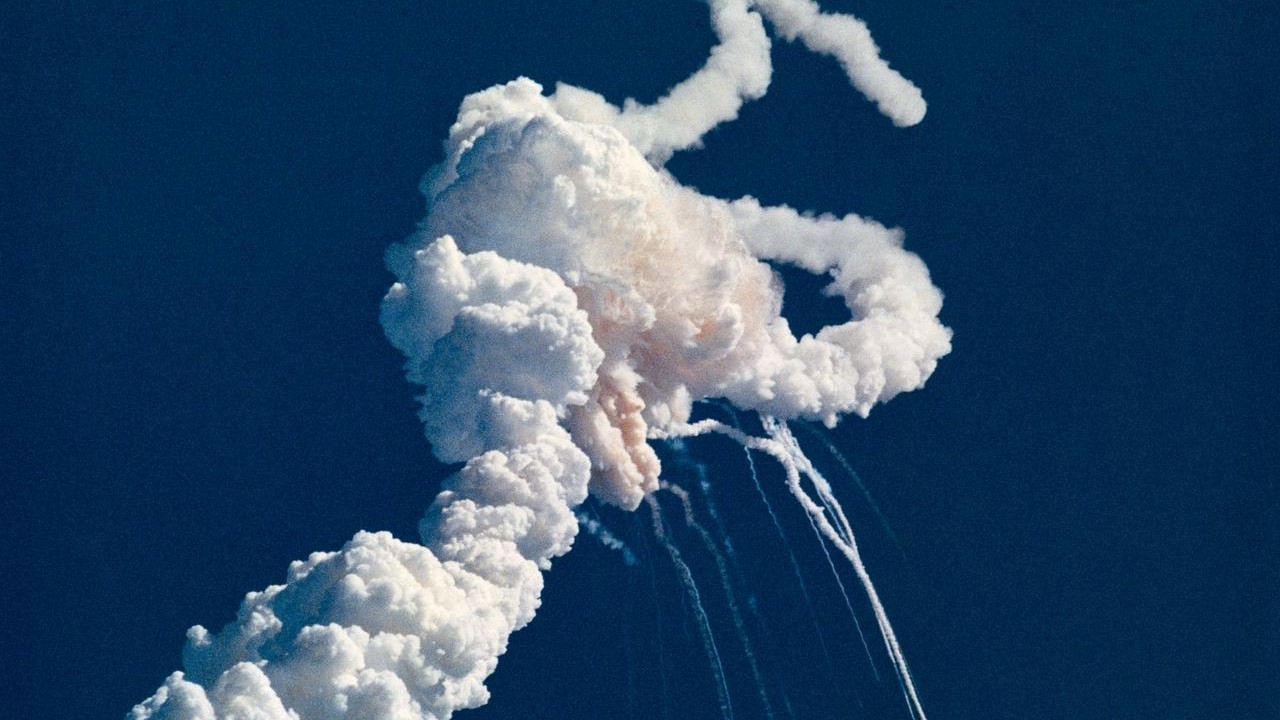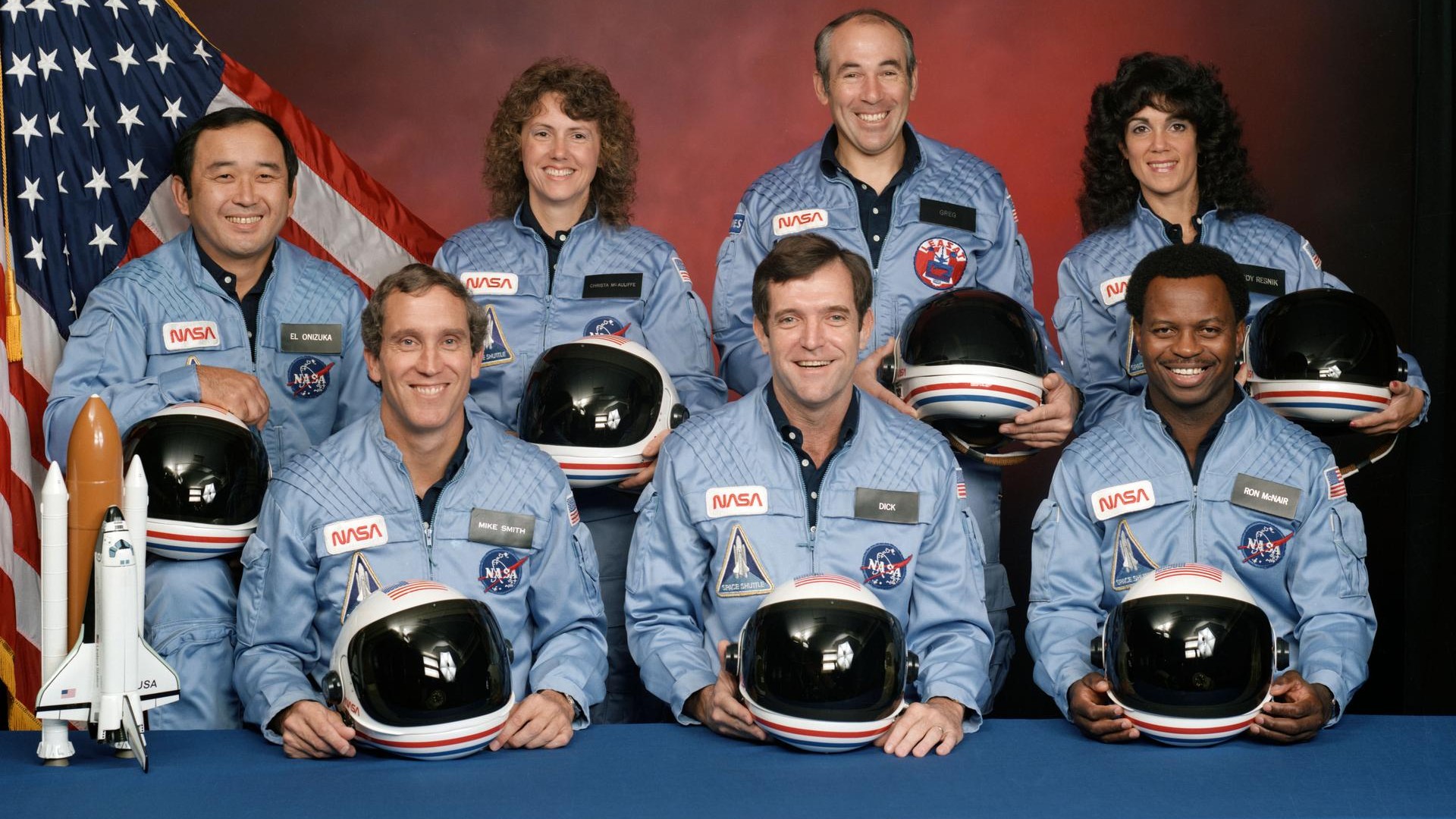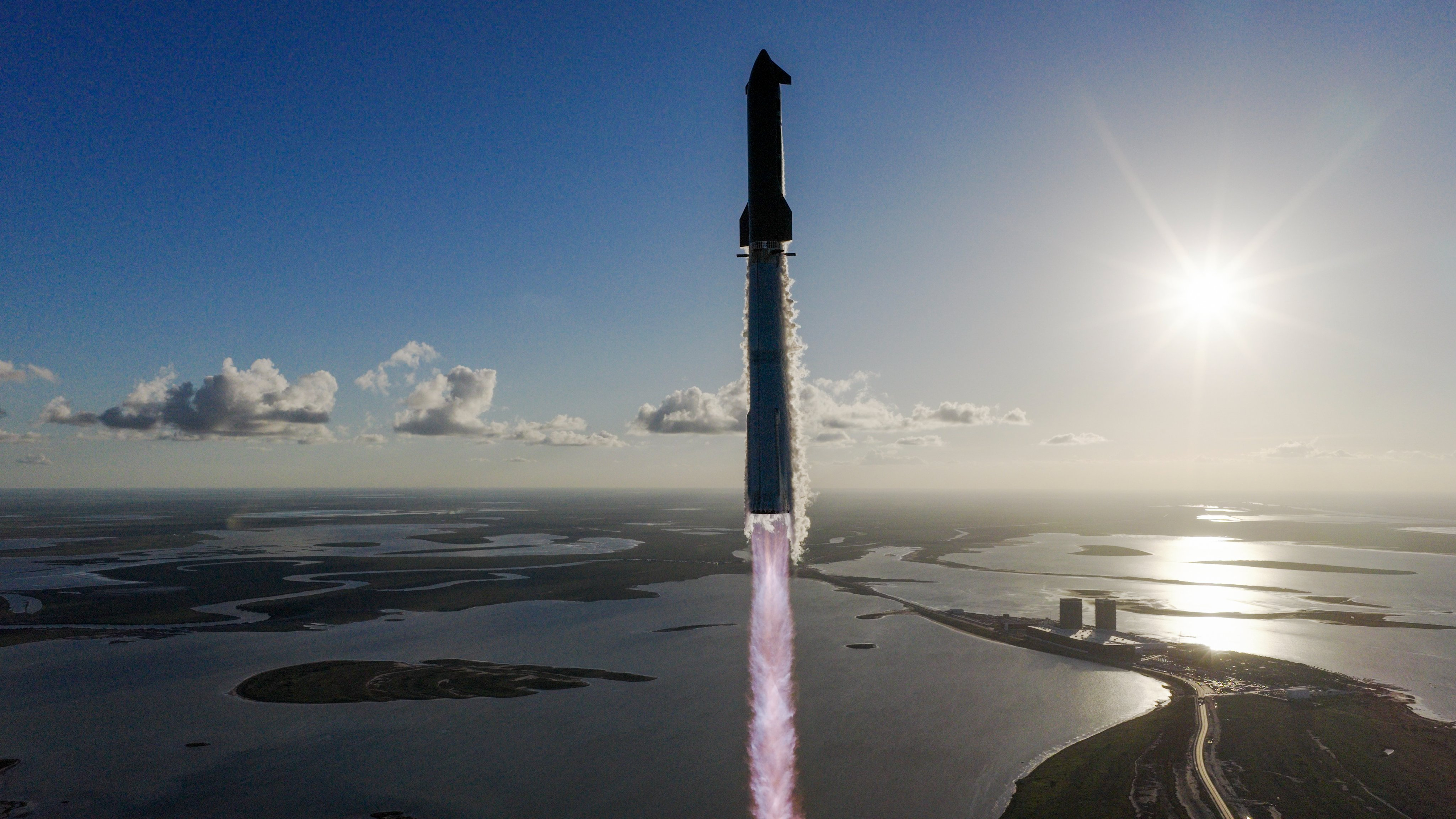Space shuttle Challenger and the disaster that changed NASA forever
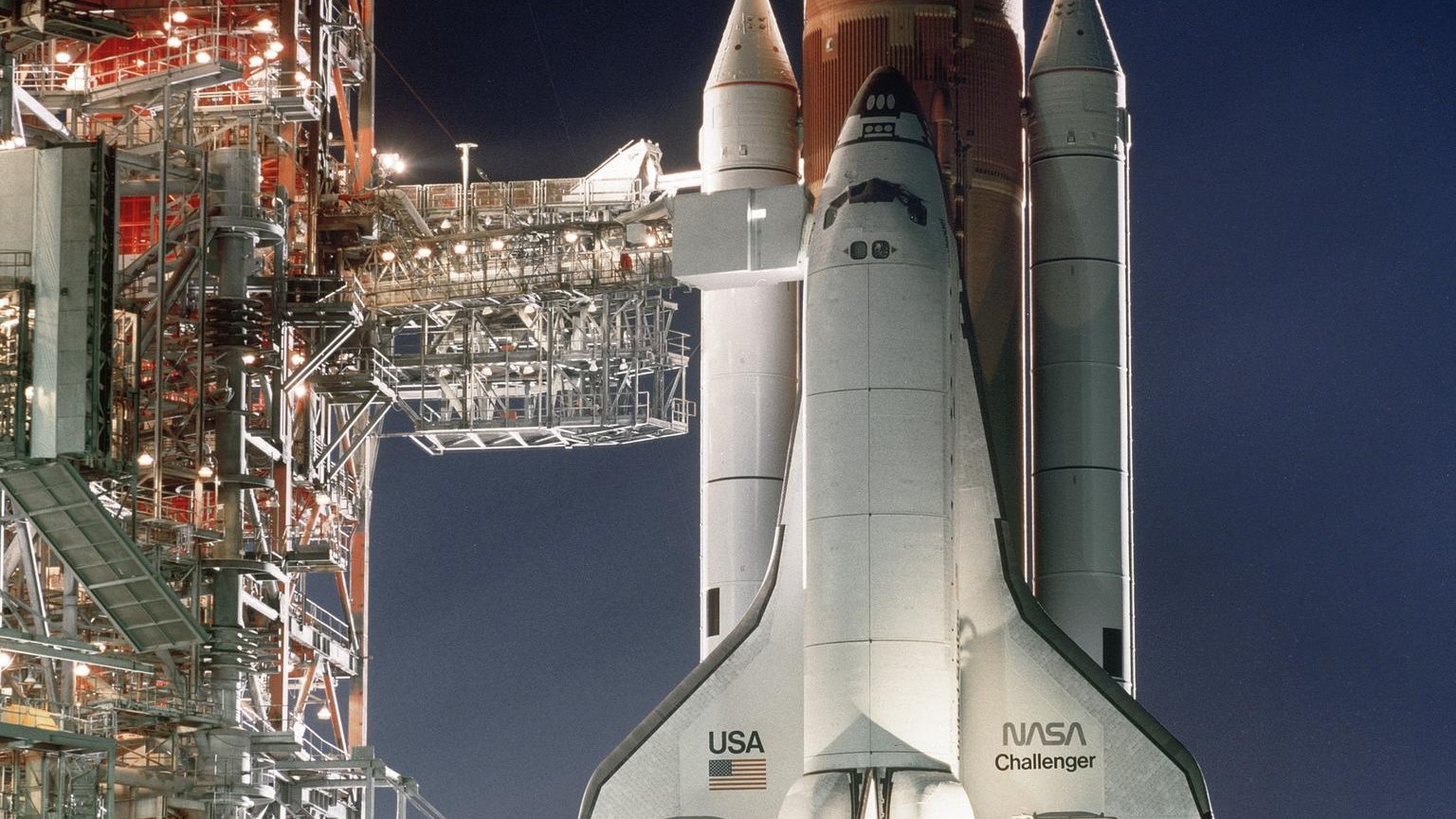
The space shuttle Challenger — during its 10th launch – on Jan. 28, 1986, exploded 73 seconds after liftoff, killing all seven crewmembers and changing NASA's space program forever.
Challenger was the second shuttle to reach space, in April 1983. It successfully completed nine milestone missions during nearly three years of service. In total, the spacecraft spent 62 days, 7 hours, 56 minutes and 22 seconds in space, according to CBS.
Challenger hosted the first spacewalk of the space shuttle program on April 7, 1983, and carried the first American female and first black astronauts.
More: Remembering Challenger: NASA's 1st Shuttle Tragedy in Photos
From test vehicle to space vehicle
NASA originally intended Challenger to be a test vehicle, according to the Kennedy Space Center. Rockwell International, an aerospace manufacturing company, began building the shuttle in November 1975 and then sent it to Lockheed Martin, another aerospace technology company, for structural testing starting on April 2, 1978, according to Reference for Business, an educational business site. According to a statement by NASA, computer models at the time were not sophisticated enough to calculate the stresses on the shuttle during different phases of flight.
First Flight: April 4-9, 1983
Last Flight: January 28, 1986
Number of Missions: 10
Time in Space: 1,496 Hours
The shuttle, then known as STA-099, went through 11 months of vibration testing in a specially formulated rig, NASA said. This custom-designed machine could bring the shuttle through a simulation of all phases of flight, from liftoff to landing. Three hydraulic cylinders, each with 1 million lbs. of force, were used as substitute space shuttle main engines.
In 1979, NASA awarded Rockwell International a supplemental contract to convert the test vehicle to a spacecraft. This would expand the shuttle fleet to two spacecraft, with Columbia being the first, though this would similarly end in disaster.
Breaking space news, the latest updates on rocket launches, skywatching events and more!
It took two more years for Rockwell to perform the conversion. Among other things, workers had to strengthen the wings, put in a real crew cabin instead of a simulated one and install heads-up displays for the astronauts working inside. Work was completed on Oct. 23, 1981, according to NASA.
Delays for the first flight
Challenger was expected to go into space on Jan. 20, 1983, to release the first Tracking and Data Relay Satellite (TDRS), which later became part of a series of satellites that astronauts used to stay in touch with controllers back home. But several technical malfunctions pushed the launch back.
First, NASA discovered a hydrogen leak in the No. 1 main engine aft compartment during a flight readiness test in December, according to Science.ksc. In a second test on Jan. 25, 1983, NASA discovered cracks in the engine that were causing the leak.
The agency then took several months to remove the engines and test them. While engines No. 2 and No. 3 were deemed healthy, NASA replaced engine No. 1, according to The New York Times.
After another delay due to a problem with the TDRS, Challenger launched successfully on April 4, 1983, on mission STS-6. Crewmembers set the satellite free. Astronauts Story Musgrave and Donald Peterson executed the first spacewalk of the shuttle program.
Cultural and technical firsts
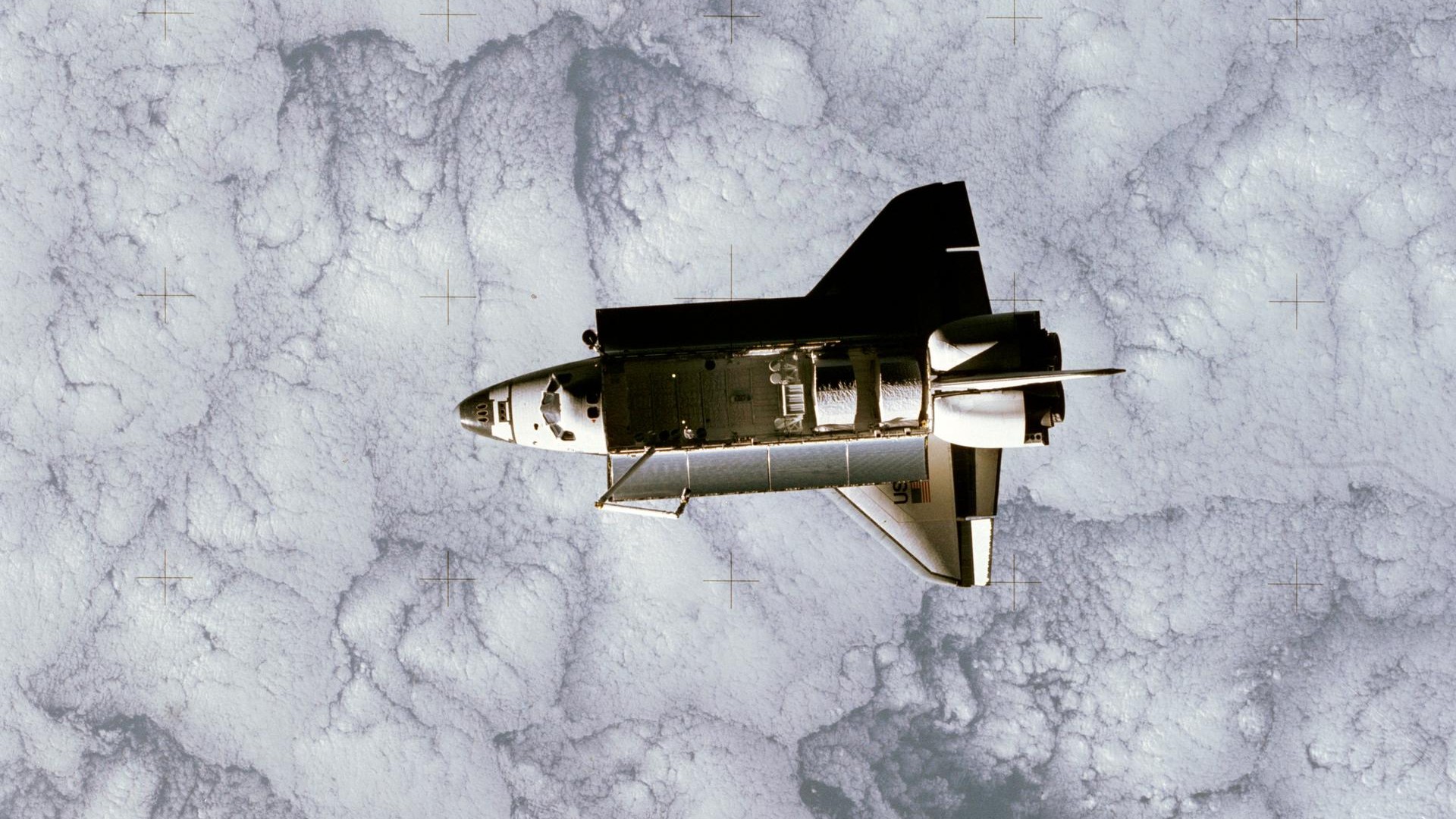
In addition to milestones in space technology, Challenger was also host to several cultural firsts in the space shuttle program. The first American female astronaut, Sally Ride, rode up on Challenger on STS-7 in June 1983. The first black astronaut, Guion Bluford, reached space on STS-8.
On STS-41G in 1984, two women — Ride and Kathryn Sullivan — flew on one mission for the first time — as well as the first Canadian, Marc Garneau.
Challenger reached other milestones, too, including the first night launch and landing (STS-8) and the first operational Spacelab flight (STS-51B). Spacelab was a European space laboratory that fit into a shuttle's cargo bay and included several experiments designed for tests in microgravity. It flew on Columbia on STS-9 for the first time, but Challenger's mission is considered the first working one.
The flying repairman
Some of Challenger's most memorable moments took place in April 1984, on STS-41C. That mission featured the very first astronaut repair of a satellite.
To get at the nonfunctional Solar Maximum Mission (SMM) satellite, astronaut George Nelson strapped himself into the Manned Maneuvering Unit, which was a jet-powered backpack designed for astronauts to fly in space. It had been tested on only one mission before this one.
The crew maneuvered Challenger until it was only 200 feet from the satellite, according to the Life Sciences Data Archive. Then, Nelson carefully left the safety of the shuttle and flew over to the satellite. A fixture on the front of his backpack let Nelson dock with the satellite, which was slowly tumbling in space, according to an article by NASA.
Next, he fired the jets on his backpack to stop the satellite's spin. Crewmembers on Challenger then reached out with the shuttle's Canadarm robotic arm and plucked the satellite out of empty space and into the payload bay.
Nelson and crewmate James "Ox" Van Hoften repaired the satellite, then the crew lofted the satellite back into space, according to The New York Times. SMM continued functioning for several years, then burned up in the atmosphere in December 1989.
Challenger disaster
It was a cold morning on Jan. 28, 1986, when Challenger was scheduled to fly its 10th mission, according to Weather.com. Temperatures dipped below freezing and some of the shuttle's engineers were concerned about the integrity of the seals on the solid rocket boosters in such low temperatures.
Nonetheless, Challenger launched at 11:38 a.m. Eastern time in front of more media attention than usual, since it was carrying the first teacher to go into space, NASA said. Christa McAuliffe was planning to give lessons while in orbit.
But McAuliffe and the rest of the crew never made it. In full view of the television cameras, Challenger broke up 73 seconds after launch.
Mission Commander: Francis Scobee
Pilot: Michael Smith
Mission Specialist: Judith Resnik
Mission Specialist: Ronald McNair
Mission Specialist: Ellison Onizuka
Payload Specialist: Gregory Jarvis
Payload Specialist, Teacher: Christina McAuliffe
"Flight controllers here are looking very carefully at the situation. Obviously a major malfunction," the NASA launch commentator said, as pieces of the shuttle fell from the sky into the Atlantic.
Salvage crews spent several weeks recovering pieces of the shuttle and carefully bringing up the remains of the seven astronauts. Remains that could be identified were turned over to the families, while the rest were buried in a monument to the Challenger crew at Arlington National Cemetery on May 20, 1986, according to Arlington's official site.
Culture of work and technical problems at NASA
The commission report talked about the technical causes of the accident. The entire failure could be traced to an O-ring, a rubber seal on the solid rocket boosters (according to Nasa Technical Reports Server) that degraded in the cold weather of the launch.
Read more: The Space Shuttle Challenger Disaster: What Happened? (Infographic)
But the O-ring would not have been a problem had NASA not chosen to launch on so cold a day –— the coldest launch yet, according to an NPR interview with one of the shuttle engineers. While the engineer blames himself for not convincing NASA and high-level managers of the danger the cold presented, a US House of Representatives report from the Committee on Science and Technology concluded that it was a long-standing failure in safety protocols, combined with an unsustainable launch rate that led to the disaster.
In the wake of what happened with Challenger, NASA made technical changes to the shuttle and also worked to change the safety and accountability culture of its workforce. The shuttle program resumed flights in 1988, according to a piece by NASA.
After the Challenger wreckage was examined, most of the pieces were buried and sealed in abandoned Minuteman missile silos at Cape Canaveral Air Force Station, where they remain today.
Challenger's explosion changed the space shuttle program in several ways. Plans to fly civilians in space (such as teachers or journalists) were shelved for the next 22 years, according to The Smithsonian Magazine. It would not be until 2007 that Barbara Morgan, who was McAuliffe's backup, flew aboard Endeavour. Satellite launches were shifted from the shuttle to reusable rockets. Additionally, astronauts were pulled off duties such as repairing satellites, and the Manned Maneuvering Unit was not flown again, to better preserve astronaut safety.
Every January, NASA pauses to remember the last crew of Challenger and the other crews lost in pursuing space, on a NASA Day of Remembrance.
Challenger has also left an educational legacy: Members of the crews' families founded the Challenger Center for Space Science Education program, which brings students on simulated space missions.
Visitors to the Kennedy Space Center can view debris from Challenger's last mission (as well as Columbia) at an exhibit called "Forever Remembered," which opened in 2015. The debris are on display at the visitor's center.
Additional Resources
To discover how the grief caused by the disaster helped inspire teachers and students, check out this Space.com article: 25 Years After Challenger: How Grief Inspired Teachers and Students. Or you can Listen to how 30 Years After Explosion, Challenger Engineer Still Blames Himself, from NPR. If you are interested, you can read more about NASA's space shuttle program.
Bibliography
- CBS News Space Calculator
- Space Shuttle Overview: NASA
- Rockwell International Cooperation: Reference for Business
- Challenger - Science. KSC
- "Challenger's flight is Delayed Again", New York Times, March 1 1983
- Emilie Le Beau Lucchesi, "A Look Back At The Challenger Disaster", Astronomy.com, October 25th 2021
- Life Sciences Data Archive
- O-Ring, Nasa Technical Reports Server
- Greg Daugherty, "The Challenger Disaster Put and End to NASA's Plans to send Civillian's Into Space", Smithsonian Magazine, January 27th 2016
Join our Space Forums to keep talking space on the latest missions, night sky and more! And if you have a news tip, correction or comment, let us know at: community@space.com.
Join our Space Forums to keep talking space on the latest missions, night sky and more! And if you have a news tip, correction or comment, let us know at: community@space.com.

Elizabeth Howell (she/her), Ph.D., was a staff writer in the spaceflight channel between 2022 and 2024 specializing in Canadian space news. She was contributing writer for Space.com for 10 years from 2012 to 2024. Elizabeth's reporting includes multiple exclusives with the White House, leading world coverage about a lost-and-found space tomato on the International Space Station, witnessing five human spaceflight launches on two continents, flying parabolic, working inside a spacesuit, and participating in a simulated Mars mission. Her latest book, "Why Am I Taller?" (ECW Press, 2022) is co-written with astronaut Dave Williams.
- Callum McKelvieFeatures Editor
- Vicky SteinContributing Writer
